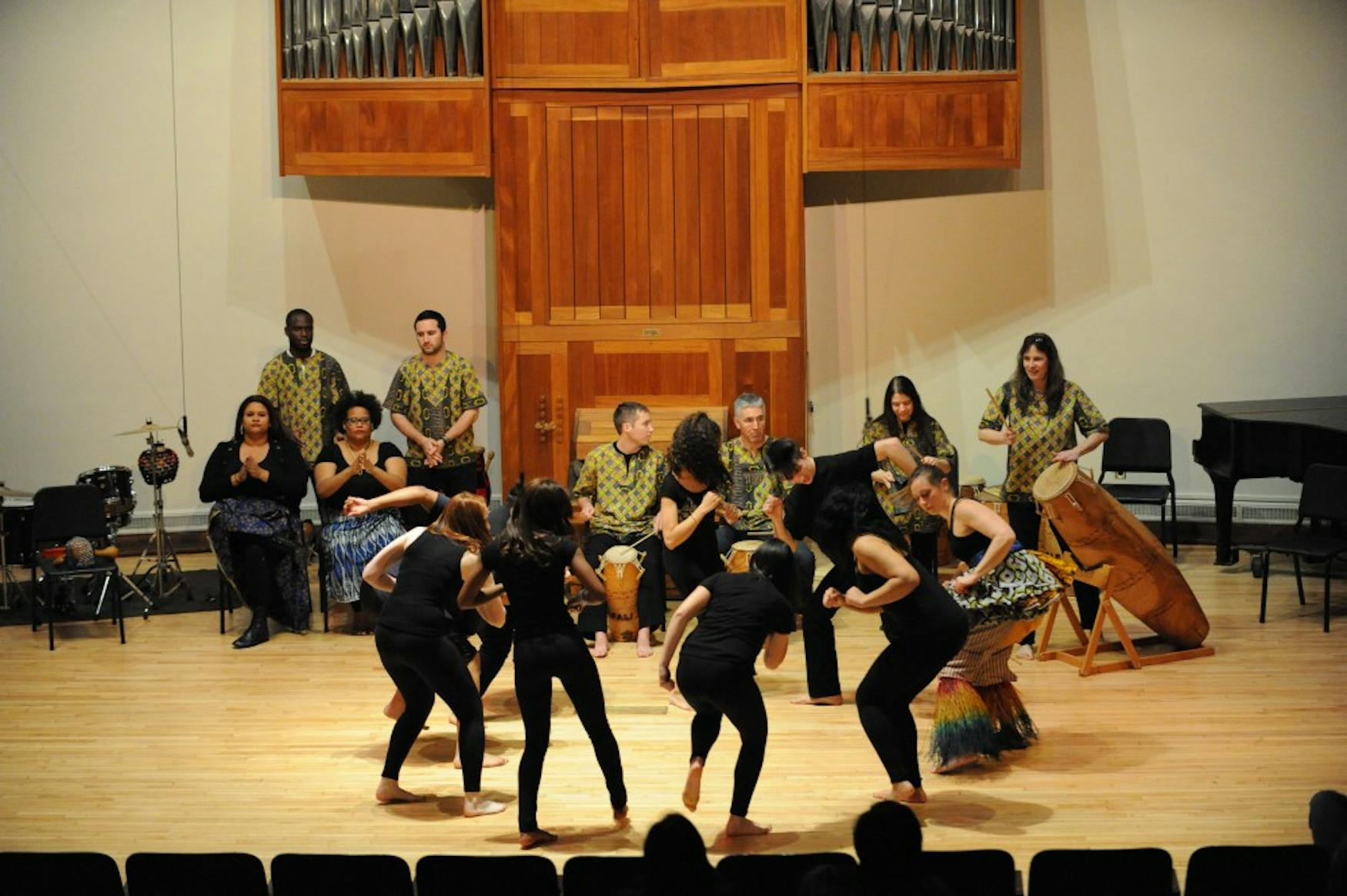Class performs Ghanaian music with two guests
The concert started with a loud cry of poetry from Faith Conant as she beat on the lead drum, prompting the rest of the group to join in on their instruments. Playing on drums and other percussion instruments in a semi-circle were the students from Conant’s “Fafali: Music and Dance from Ghana” class, joined by a few special guests. As the first piece, “Gahu” went on, beats reverberated off the walls of the hall, filling the whole room with powerful, intense rhythms.
The concert, held on Sunday night in Slosberg Music Center, was the class’s end-of-semester concert. “Fafali” is a for-credit-only class, and some students take it for multiple semesters. Conant said that this group was a mixed one—some of the students had been in the class for two or three semesters while some had just started.
According to Conant, Fafali means peace and coolness in Ewegbe, one of the Gbe languages, which is spoken in Ghana and Togo. The concert focused on pieces in the Fon language and incorporated dancing, singing and drumming.
Attah Poku and Ben Paulding, the two guest musicians, previously worked together in Ghana. Poku is a Ghanaian and a master Ashanti drummer. He now works at Tufts University, teaching African music. Paulding is in the music masters program at Tufts University where he studies under Poku and has spent the last few years in Ghana studying and performing. Paulding will be teaching the Fafali class next semester.
After the first two pieces, Conant gave the audience some context for the music. She talked about the original setting of the drum performances—how they are usually played with the audience sitting around the performing group. She also spoke about the music itself, deconstructing the beats for the audience with individual demonstrations of some of the instruments. Conant noted that in the pieces there “is a lot of repetition but a lot of subtlety being used.”
The third piece was a piece that referenced the music itself. Conant translated the lyrics as, “It is difficult and we will play it.” She noted that the lyrics refer to the polyrhythmic nature of the piece. Conant started the piece by reciting the poem in the original language in a loud and powerful voice. The students proceeded to come out onstage and performed a choreographed dance to the beats of the drums. The group could only afford one of the extravagant costumes, Conant said, but she told the audience to imagine that all the dancers were wearing the large, colorful and puffy tutu-like skirt.
Near the end of the concert, guest musician Paulding introduced a piece the group was about to perform, originating from the Ashanti region in southern Ghana The Ashanti region, Paulding explained, was one of the largest pre-colonial empires in Africa. The piece used Kete beats (the Ashanti royal music) and necessitated a different set of drums than the previous pieces used. The piece also used a loud bell that kept everyone in time, Paulding said.
Poku and Paulding then played a duet. Paulding introduced the duet as an experiment that he and Poku had been working on while in Ghana. He said that they had wanted to figure out a way that two people could play the Ghanaian pieces traditionally meant for large groups. Their solution was a drum set. Paulding had a history in drumming, so the drum set, with its multifaceted range of rhythmic instruments, seemed like the perfect solution. So the drummers took on the challenge—Paulding on the set and Poku on one of the larger Kete drums. Paulding told the audience that he wrote an article on the piece in which he included its music notation, if any drummers out there wanted to learn how to play it.
The last piece they performed was the same as the first, but this time, the students danced in sync with the music. In jade-green geometrically printed apparel, the students moved in a circular formation with intricate footwork and slightly bent postures. At some points in the dance, the students paired up for certain steps, and, at the end, danced in a line off stage.
During the concert, it was hard not to be completely mesmerized by the intricate and strong beats of the drums, the lively, brightly colored dancers and the poetic singing and chanting. It was a great way to forget about finals.



Please note All comments are eligible for publication in The Justice.